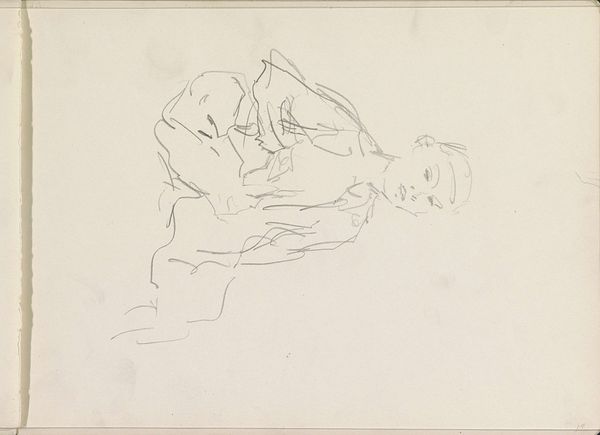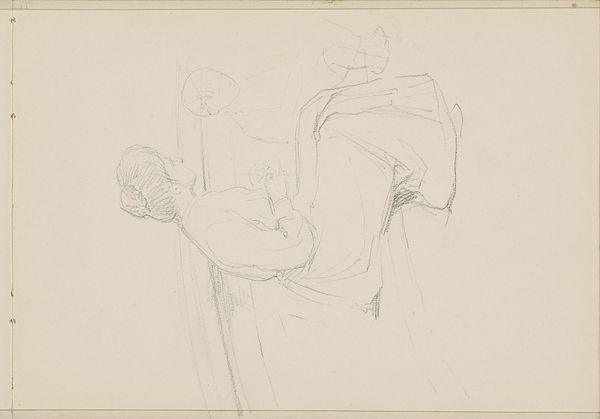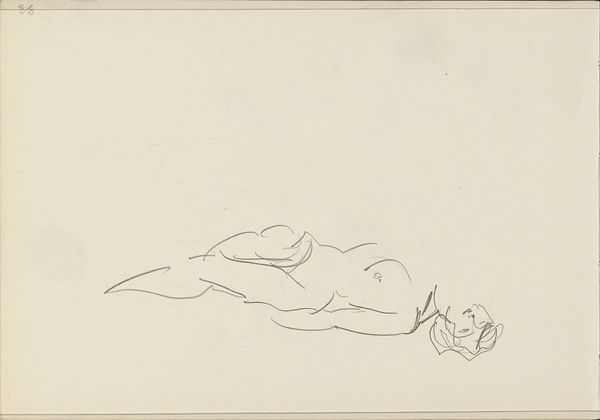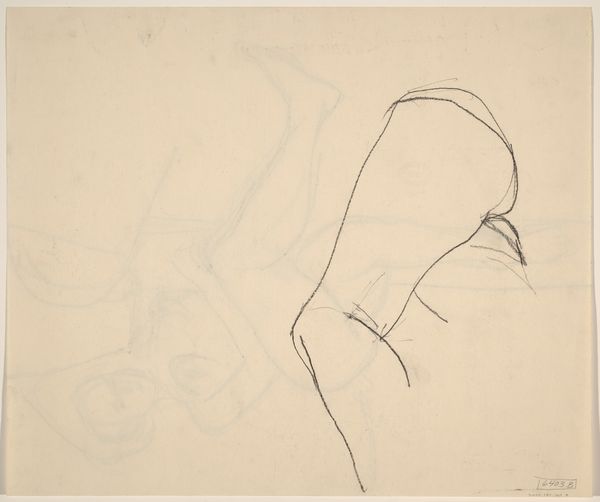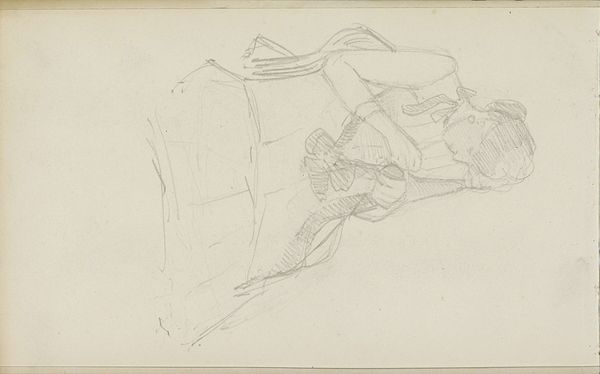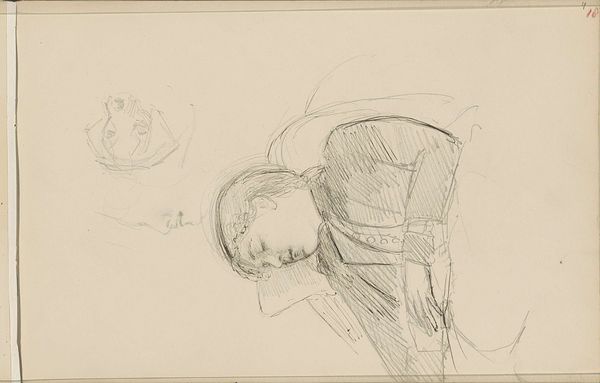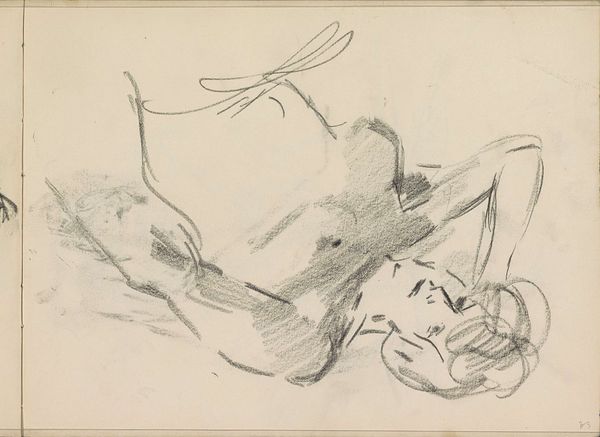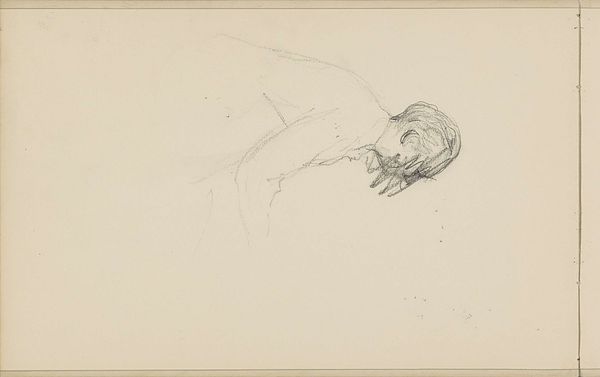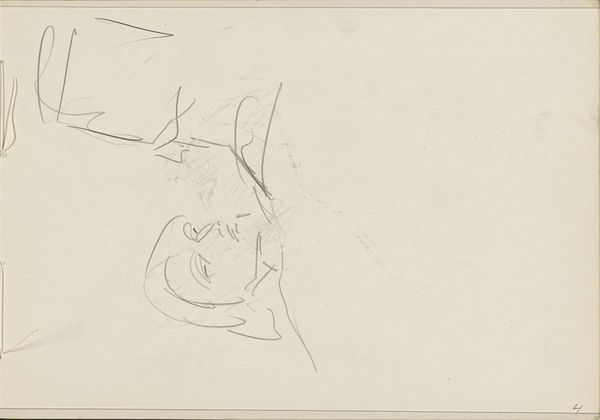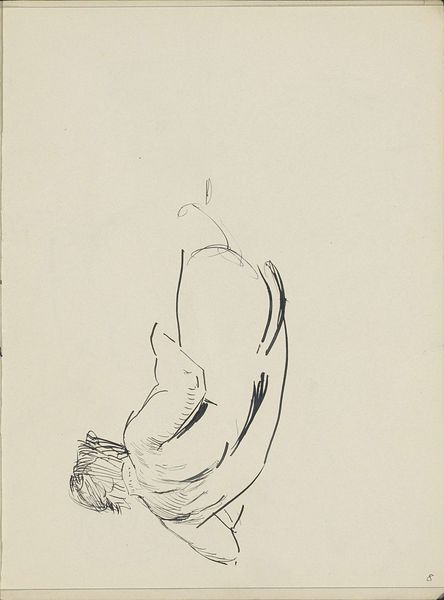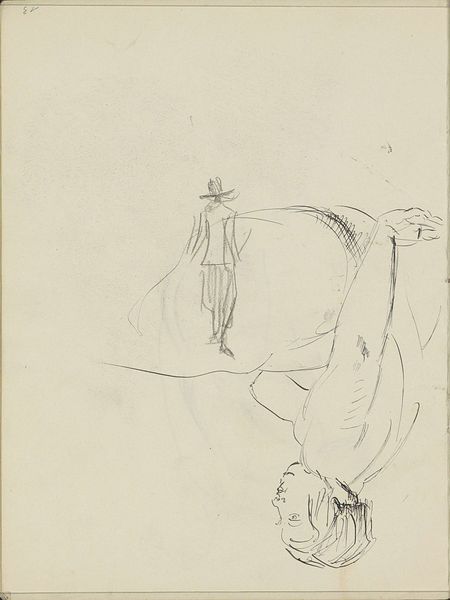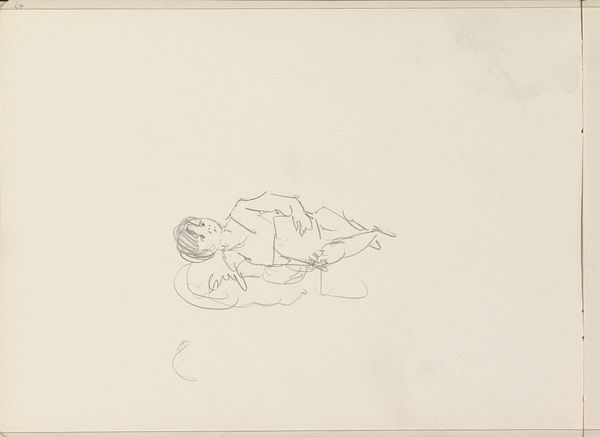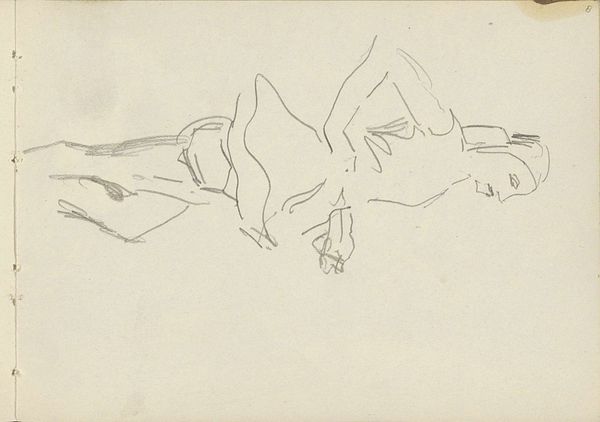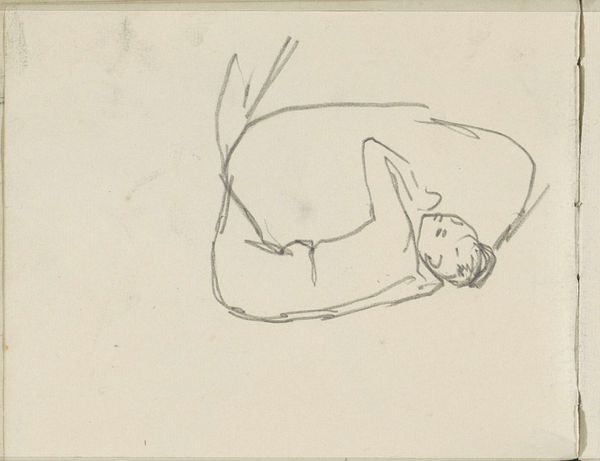
drawing, paper, pencil
#
portrait
#
drawing
#
impressionism
#
pencil sketch
#
figuration
#
paper
#
child
#
pencil
#
line
Copyright: Rijks Museum: Open Domain
Editor: Here we have "Kind dat voorovergebogen op de knieën zit," a pencil drawing on paper, dating from 1865-1913, currently housed in the Rijksmuseum. The lines are so delicate and the figure feels caught in a moment of private absorption. What historical or social context might illuminate this seemingly simple sketch? Curator: This drawing presents an intimate, yet ultimately, public display. While seemingly spontaneous, images of childhood—especially in this era—were often highly constructed, reflecting societal anxieties and desires around innocence and the future. How might the rising tide of photography influenced such drawn portrayals? Editor: That's interesting. Perhaps photography's growing accessibility put pressure on drawings to capture something more internal or ephemeral, something a photograph couldn’t quite grasp? Curator: Precisely. Consider the increasing prominence of childhood in broader cultural and political discourse at the time. Children become potent symbols, deployed in nationalistic projects and sentimental narratives alike. A sketch like this, circulated and displayed, participates in those discourses, subtly reinforcing particular visions of childhood, innocence, and domesticity. Does that make sense in your opinion? Editor: Yes, it does. So even a seemingly innocent drawing is never truly neutral; it reflects and reinforces broader social narratives. Thank you, this has given me so much to think about! Curator: Indeed, and this careful observation can reshape our perception of even the most intimate works.
Comments
No comments
Be the first to comment and join the conversation on the ultimate creative platform.
